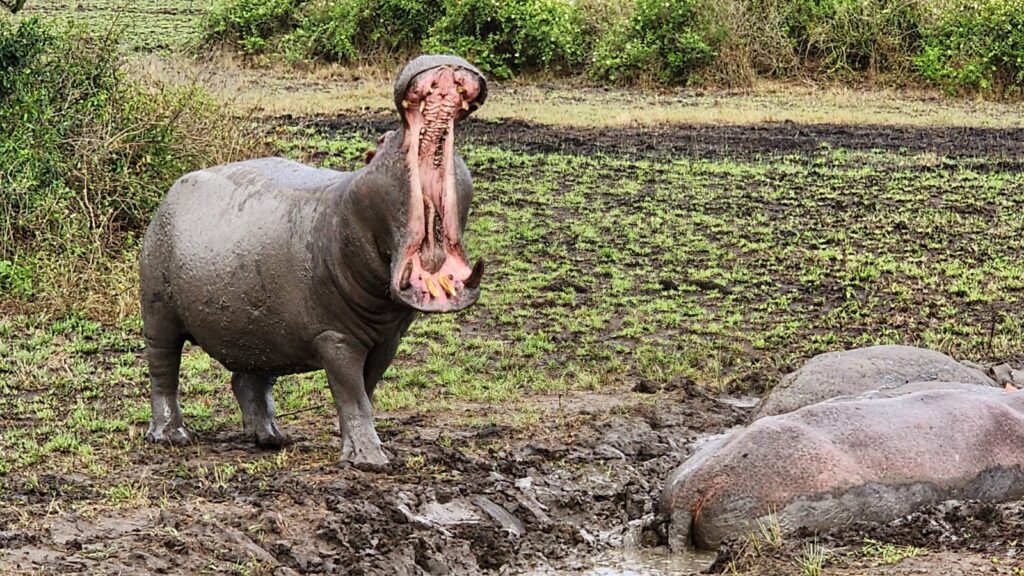The hippopotamus (hippo) is one of the largest mammals found in Africa. They are semiaquatic animals meaning, they spend most of their time in water during day and feed on plants at night. We will discuss some of the attributes you need to know about the hippos and this will act as a Uganda travel guide especially as far as hippos are concerned;
Habitat:
Hippopotamuses are found in sub-Saharan Africa. These animals live both on land and in water sources such as; Lakes, rivers, and swamps. Hippos normally get out of the water at night to feed. These animals can remain submerged in water for extended periods of up to five minutes at a time. This fact makes the hippos prefer shallow, flow moving or stagnant water which enables them to stay submerged. The hippos are mostly found in protected areas and national parks which are accessible using 4×4 safari land cruisers, since they are very much susceptible to poaching and habitat loss.
Diet:
Hippopotamuses are herbivores and eat a diet consisting of grass mainly, just like cows. These animals can consume up to 40Kgs per day. Their food is mostly comprised of aquatic plants, reeds, and grass. They prefer to feed at night when there is limited to no competition for grass, and also when the temperatures are cooler. Most of the time during day, they are in the water.
Conservation Status:
According to the International Union for Conservation of Nature (IUCN), the hippos are classified as vulnerable animals. The hippos are vulnerable as a result of poaching, hunting, and habitat loss.
Since the hippos inhabit areas where humans tend to utilize most, they are faced with human encroachment as a result of competition for water and grazing area. Diseases such as foot and mouth disease as well as anthrax also attack these hippos.
Physical Characteristics:
Hippos are large creatures that can weigh up to 3,500 kg (7,700 lbs) and can grow up to 5.5 meters in length, making them one of the largest land creatures on the planet earth. They have short legs, barrel-shaped body, and a broad, flat nose. They spend most of their time in mud or water because their skin is sensitive to dehydration. The skin of the hippo is hairless and grayish-brown, with some patches of pinkish or purplish coloration. Hippos have large ears, nostrils, and eyes, which are placed high on the skull, one of the reasons why they are able to remain mostly submerged while still being able to see and hear their surroundings.
Behavior:
Hippos are predominantly territorial animals and very well known for their aggressive behavior. Led by a dominant male, they live in social groups of up to 30 individuals, called pods. During the mating season, the males are particularly aggressive and will fight for the right to mate with females with other males to establish dominance. Aside from that, hippos are generally peaceful animals but can become dangerous when threatened or provoked. Hippos are considered one of the most dangerous animals in Africa due to their aggressive behavior towards humans. Hippos are also known for their vocalizations, which include grunts, groans, and bellows.
General public perception:
The hippopotamus is an impressive and fascinating wild animal found in all the savanna national park in Uganda that is, Lake Mburo National Park, Murchison Falls National Park, Queen Elizabeth National Park, Kidepo Valley National Park. Although it is a joy to watch, it is important to note that these animals are aggressive and territorial. Always take the advice of your range guide while on a holiday in Uganda to prevent accidents and unforeseeable circumstances.

